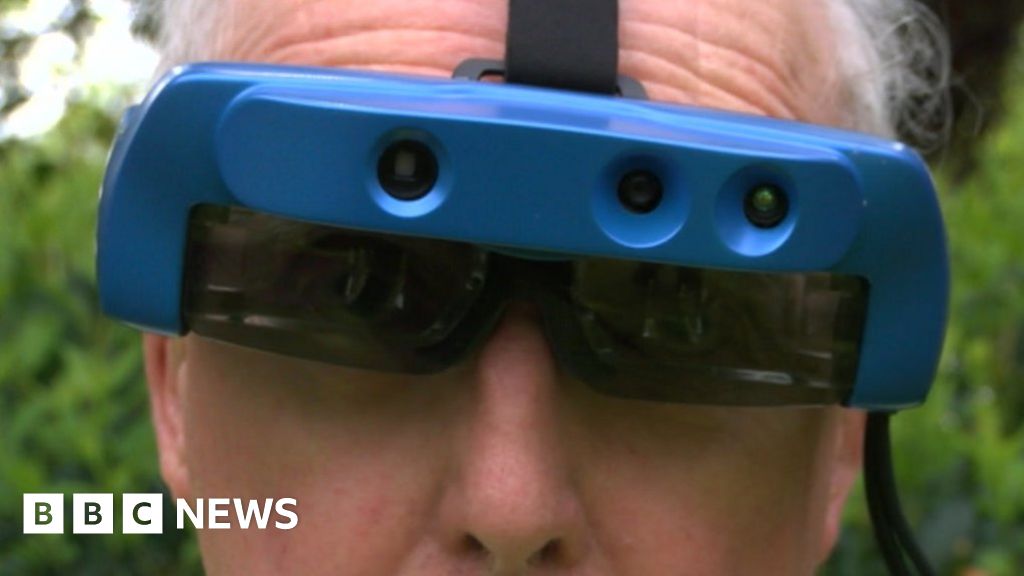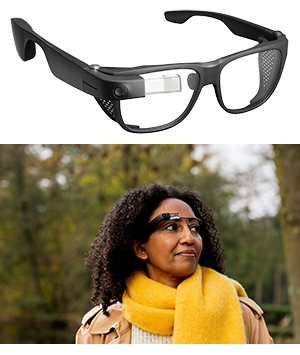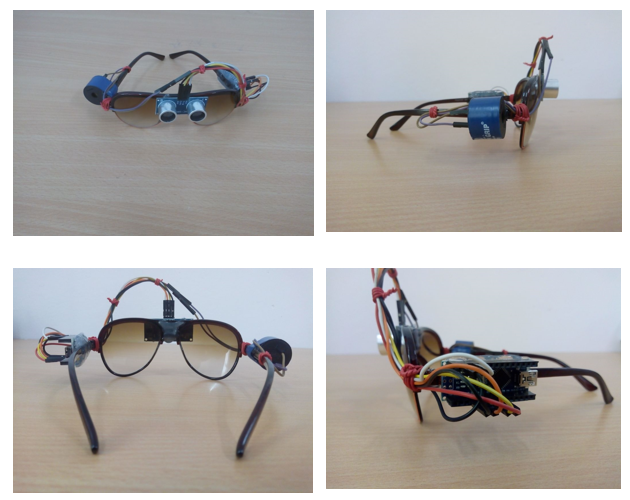Speech-to-Text Devices for Low Vision Users: Enhancing Communication and Productivity
Empowering Independence With Assistive Technology for the Blind
The integration of assistive modern technology for people that are blind or visually impaired stands for a substantial innovation in fostering freedom and enhancing lifestyle. With a range of gadgets-- from display viewers to innovative responsive tools-- these technologies not only help with navigation and interaction but also advertise social inclusion and engagement in various elements of life. As we explore the diverse sorts of assistive gadgets and their real-world applications, it becomes clear that the impact is extensive. Yet, the evolution of this innovation increases essential questions concerning ease of access and future growths that call for more exam. Assistive technology for the blind.
Comprehending Assistive Technology
Although assistive modern technology has progressed substantially over the years, its basic objective remains the exact same: to boost the lifestyle for individuals with handicaps, particularly those who are visually damaged or blind. This innovation includes a wide range of tools and devices that promote freedom and capability in day-to-day activities.
Assistive technology can be classified right into low-tech and high-tech services, each created to satisfy certain demands. High-tech tools typically consist of software application applications, specialized equipment, and flexible tools that make use of innovative modern technology to supply support in different contexts. Alternatively, low-tech remedies might include everyday things that are customized to enhance accessibility, such as magnifiers or responsive pens.
The assimilation of assistive modern technology right into the lives of people that are blind or visually hindered not just promotes autonomy however likewise fosters social incorporation and engagement in expert and educational settings. By leveraging these modern technologies, users can browse their environments, access info, and interact properly, therefore enhancing their general lifestyle. Understanding assistive innovation is critical for caregivers, supporters, and experts who intend to support individuals in maximizing their possible and achieving better self-reliance.
Kinds of Assistive Instruments
Assistive gadgets for the blind and aesthetically damaged are essential tools that boost daily living by dealing with particular difficulties run into by individuals. These devices can be extensively classified right into three main kinds: optical tools, electronic tools, and sensory gadgets.

Sensory devices, such as Braille display screens and responsive maps, provide different means to obtain info. Braille shows transform digital text into Braille, allowing customers to go through touch. Responsive maps use spatial understanding with elevated textures and lines, enabling for better ecological recognition.
With each other, these assistive tools equip individuals with visual disabilities to engage more completely with their surroundings, promoting greater independence and confidence in daily activities.

Effect On Life
The integration of assistive modern technology right into the day-to-days live of individuals who are blind or visually damaged dramatically enhances their ability to connect and browse with the world around them. Instruments such as screen visitors, Braille shows, and mobile applications facilitate accessibility to information, allowing users to involve with digital web content, communicate efficiently, and take care of daily jobs independently.
Furthermore, innovations like smart glasses and navigating apps provide real-time assistance in strange settings, improving mobility and confidence. These tools allow individuals to recognize obstacles, read indicators, and even recognize faces, thus fostering a sense of autonomy in public areas. In addition, home automation systems, which can be managed via voice commands, allow individuals to handle their living settings better, improving convenience and security.
The effect of assistive technology expands past functional jobs; it promotes social incorporation and emotional health. By linking the void between people and their surroundings, these technologies empower customers to get involved completely in area tasks, go after academic possibilities, and take part in significant partnerships. Ultimately, the innovation of assistive modern technology contributes in redefining the opportunities for people who are aesthetically damaged or blind, leading to an extra comprehensive and available culture.
Success Stories and Testimonials

An additional effective testimony originates from Mark, a recent college graduate that made use of display reading software application throughout his scholastic journey. This technology enabled him to gain access to course products and get involved in conversations, eventually resulting in his successful transition right into the labor force. Mark credit ratings assistive hop over to these guys modern technology for encouraging him to accomplish his occupation objectives, stressing its function in leveling the playing area for people with visual problems.
Additionally, community centers have reported raised involvement in their programs thanks to the intro of easily accessible digital systems. These systems have made it much easier for people to connect, share resources, and support one another. These success stories jointly underscore the extensive effect of assistive modern technology in promoting independence, boosting lifestyle, and damaging down barriers for the aesthetically impaired and blind area.
Future Patterns in Assistive Technology
Emerging modern technologies are poised to change the landscape of assistive technology view for people that are blind or aesthetically impaired. Developments in fabricated knowledge (AI) and artificial intelligence are enhancing the abilities of devices, allowing even more user-friendly customer experiences. AI-driven applications are increasingly able to recognize objects and read message aloud in real-time, offering individuals with important details regarding their surroundings.
Additionally, developments in wearable technology are producing brand-new possibilities for independence. Smart glasses equipped with enhanced reality attributes can overlay vital information onto the customer's line of vision, helping with navigation and communication with the setting. The combination of Net of Things (IoT) devices is streamlining access in smart homes, enabling individuals to control appliances and receive notices through voice commands or responsive user interfaces.
The development of braille display screens and tactile responses systems is additionally increasing, advertising accessibility to electronic material and improving communication. As these innovations remain to advance, they assure to improve daily living, instructional opportunities, and employment potential customers for individuals with visual disabilities. Continual partnership between engineers, customers, and campaigning for teams will certainly be important in making sure these developments fulfill the requirements of the community successfully.
Verdict
In verdict, assistive modern technology plays an essential function in improving the independence of individuals that are blind or aesthetically damaged. By giving necessary devices and sources, these innovations facilitate enhanced access, interaction, and navigating to information, therefore promoting autonomy and positive self-image. The transformative effect of assistive devices not only promotes reliable interaction with the atmosphere get more however also urges social incorporation and involvement in various facets of life, eventually empowering users to flourish within their areas.
The combination of assistive technology for people that are visually damaged or blind represents a substantial improvement in promoting freedom and improving top quality of life.The assimilation of assistive technology right into the lives of people who are blind or visually hindered not only promotes autonomy however likewise fosters social addition and involvement in academic and specialist environments. Ultimately, the improvement of assistive innovation is crucial in redefining the possibilities for people who are blind or aesthetically impaired, leading to a more available and inclusive culture.
Many individuals who are blind or visually impaired have actually shared inspiring success stories that highlight the transformative effect of assistive technology on their lives.In final thought, assistive innovation plays a crucial role in enhancing the independence of individuals that are aesthetically damaged or blind.